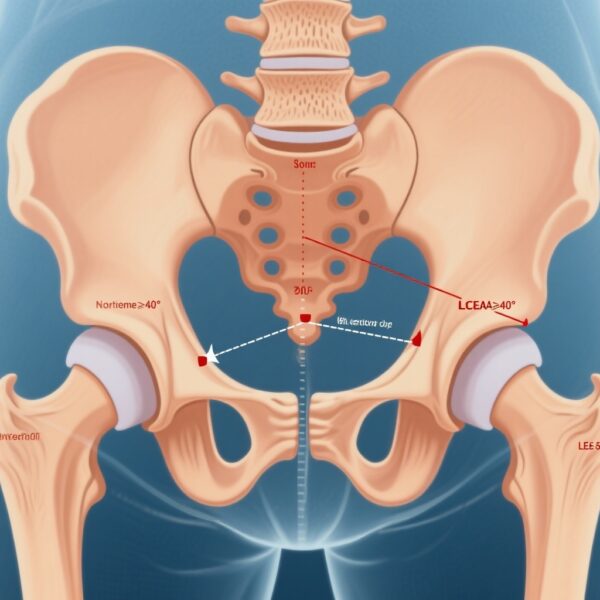Highlights
– Aerobic exercise produced a large pooled reduction in depressive symptoms in adults with chronic illness and comorbid depression (Hedges’ g -0.73; 95% CI -0.99 to -0.46).
– A dose–response relationship was observed: each additional 10 MET‑min/week was associated with a small incremental improvement (effect -0.01 per 10 MET‑min/week).
– An exercise volume of ~405 MET‑min/week (≈120–135 minutes of moderate‑intensity aerobic activity per week) was estimated to reach the minimally important difference (MID) for symptom improvement in this population.
Background: clinical context and unmet need
Depression is common in people living with chronic medical conditions (cardiovascular disease, diabetes, COPD, cancer, neurological and musculoskeletal disorders) and is associated with worse quality of life, higher healthcare use, poorer disease self‑management, and increased mortality. Exercise is an evidence‑based therapy for depression in general populations, but conventional exercise recommendations (for example, the WHO target of ≈450 MET‑min/week, equivalent to 150 minutes of moderate‑intensity activity weekly) may not take into account reduced functional capacity, fatigue, pain, or multimorbidity that limit activity in people with chronic illness. Clinicians need pragmatic, evidence‑based targets that balance feasibility and therapeutic effect for this vulnerable group.
Study design
This systematic review and meta‑analysis (PROSPERO CRD42021282103) searched four databases (PubMed, Embase, Web of Science and PsycINFO) to May 2025 for randomized controlled trials comparing aerobic exercise interventions with passive controls in adults who had a chronic medical condition and comorbid depression. Thirty‑six RCTs including 2,500 participants were pooled. Depressive symptoms were assessed with validated rating scales. A random‑effects model produced pooled Hedges’ g estimates, and meta‑regression examined a dose–response relationship between weekly aerobic exercise volume (expressed as MET‑minutes per week) and depressive symptom change.
Key findings
Main pooled effect
Aerobic exercise versus passive control produced a pooled effect size of Hedges’ g = -0.73 (95% CI -0.99 to -0.46; p < 0.001), indicating a medium–large reduction in depressive symptoms across trials. Heterogeneity was substantial (I2 = 81%), reflecting variability in participant characteristics (types of chronic illness, baseline depression severity), intervention parameters (intensity, frequency, duration, supervision) and outcome measures.
Dose–response relationship
Meta‑regression identified a statistically significant dose–response association: each increment of 10 MET‑min/week was associated with an effect of -0.01 on depressive symptoms (95% CI -0.016 to -0.002; p = 0.014). Translating MET‑minutes into practical terms: one week of 30 minutes daily brisk walking (commonly ~3 METs) for five days gives 450 MET‑min; the study estimated 405 MET‑min/week would, on average, achieve a symptom change at or above the minimally important difference (MID) for patients with chronic illness and comorbid depression.
Clinical translation: what does 405 MET‑min/week look like?
MET‑minutes combine intensity (METs) and duration (minutes). Moderate‑intensity aerobic activity is commonly estimated at ~3 METs. Therefore, 405 MET‑min/week corresponds roughly to 135 minutes of moderate‑intensity activity (405 ÷ 3 ≈ 135), or around 120–140 minutes depending on assumed MET value and rounding. Practical prescriptions could include brisk walking 25–30 minutes on 4–5 days per week, or other moderate aerobic activities tailored to the patient (cycling, water exercise, light treadmill). This target is slightly below the WHO common benchmark of 150 minutes/week (≈450 MET‑min) but was sufficient on average to achieve a clinically meaningful improvement in depressive symptoms in the studied trials.
Secondary and safety findings
The summary presented focused on symptom reduction and dose–response. Reporting of adverse events or tolerability varied across trials; aerobic exercise interventions are generally considered low risk but require individual risk assessment in people with chronic illness. Because all comparators were passive controls (e.g., usual care, wait‑list), the additional benefit versus active comparators (psychotherapy, antidepressants, or alternative supervised activities) could not be assessed by this analysis.
Evidence certainty and heterogeneity
The large pooled effect is clinically encouraging, but substantial heterogeneity (I2 = 81%) indicates that effect sizes varied between studies. Possible contributors include differences in: chronic disease type and severity, depression diagnostic thresholds, exercise modality and supervision, concurrent treatments (pharmacotherapy, psychotherapy), adherence rates, and follow‑up duration. The authors used random‑effects models and dose‑response meta‑regression to account for variation, but residual confounding is likely.
Expert commentary: implications, mechanisms, and limitations
Clinical implications
This meta‑analysis supports aerobic exercise as an effective, scalable adjunctive treatment for depression in patients with chronic illnesses. Crucially, it provides a pragmatic target (~405 MET‑min/week) that is likely achievable for many patients and is slightly lower than standard public health recommendations, making it more adaptable for reduced functional capacity. Clinicians should consider recommending individualized, progressive aerobic programs that emphasize attainable initial targets, graded increases, and integration with routine disease management.
Mechanistic plausibility
Exercise may improve mood via multiple biological and psychosocial pathways: modulation of inflammatory cytokines, upregulation of neurotrophic factors (e.g., BDNF), enhancement of monoaminergic neurotransmission, improved sleep and energy, and psychosocial benefits including mastery, social interaction, and self‑efficacy. These mechanisms plausibly operate in patients with chronic illnesses, though specific pathways may vary by condition.
Limitations and cautions
Key limitations to consider before broad application: (1) Heterogeneity across studies limits precise prediction for individual patients. (2) Most trials used passive controls; comparisons with first‑line depression treatments are limited. (3) Reporting of adverse events and long‑term maintenance of benefit were inconsistent. (4) Adherence challenges in chronic illness (pain, fatigue, comorbidity) may reduce real‑world effectiveness. (5) Publication and small‑study biases can inflate pooled effects. Clinicians should therefore personalize recommendations, monitor safety and adherence, and combine exercise prescriptions with established treatments as clinically indicated.
Practical recommendations for clinicians
– Offer a clear, achievable aerobic target: begin with short, frequent sessions (e.g., 10–15 minutes once or twice daily) and progress toward approximately 120–135 minutes/week of moderate‑intensity activity (≈405 MET‑min/week). For many patients this maps to brisk walking 25–30 minutes on 4–5 days weekly.
– Tailor intensity and modality to the patient’s chronic condition, functional capacity, comorbidities, and preferences; consider supervised or remotely supported programs for higher‑risk individuals.
– Combine exercise prescriptions with behavioral strategies (goal setting, activity monitoring, motivational interviewing) to improve adherence.
– Monitor depressive symptoms and functional capacity periodically; adjust the plan or add conventional therapies (antidepressants, psychotherapy) if response is inadequate.
Conclusion
This systematic review and meta‑analysis of 36 RCTs indicates that aerobic exercise produces substantial reductions in depressive symptoms among adults with chronic medical conditions and comorbid depression. The dose‑response analysis suggests that a weekly target of approximately 405 MET‑minutes — equivalent to about 120–135 minutes of moderate‑intensity aerobic activity — is, on average, sufficient to achieve a minimally important improvement in symptoms. These findings help bridge a practical gap between population‑level physical activity guidance and the clinical need for feasible targets in patients with limited capacity. Implementation should be individualized, integrated into multimodal care, and accompanied by measures to support adherence and safety.
Funding and registration
The systematic review was prospectively registered in PROSPERO (CRD42021282103). Funding sources were not detailed in the summary provided here; readers should consult the full article (Leung et al., Br J Sports Med. 2025) for disclosures.
References
1. Leung CK, Yu AP, Bernal JD, et al. Dose‑response effects of aerobic exercise on reducing depression in patients with chronic illness and comorbid depression: a systematic review and meta‑analysis. Br J Sports Med. 2025 Oct 29:bjsports-2025-110371. doi:10.1136/bjsports-2025-110371. PMID: 41161714.
2. Cooney GM, Dwan K, Greig CA, et al. Exercise for depression. Cochrane Database Syst Rev. 2013; (9):CD004366. (Also summarized in BMJ commentary and subsequent reviews.)
3. World Health Organization. WHO Guidelines on Physical Activity and Sedentary Behaviour. Geneva: WHO; 2020.
Author note
This article synthesizes and interprets findings from a recently published systematic review and meta‑analysis to offer clinicians practical, evidence‑based guidance on prescribing aerobic exercise for depressive symptoms in patients with chronic illness.



